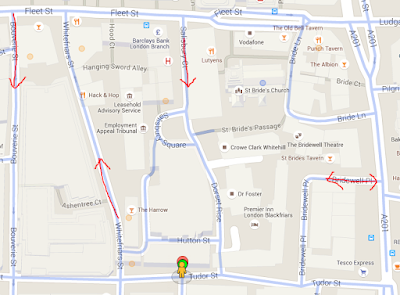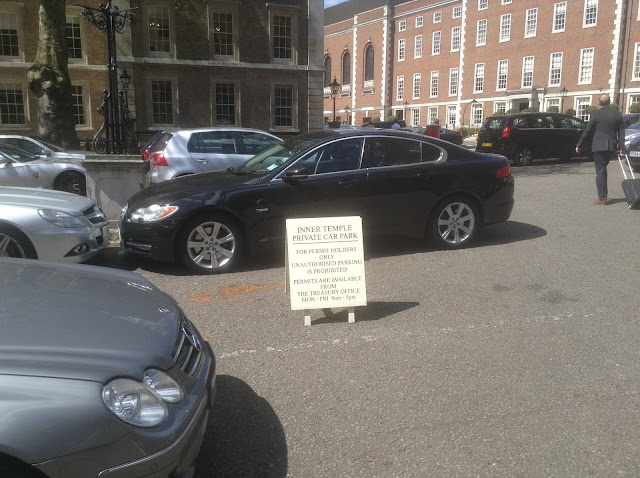We recently returned from our fourth visit to Montréal, and
the first in which we used the Bixi hire bike system.
Our first visit in 2014 was in February, for a prospective
students’ open day at McGill, and only
the most intrepid Montréalers cycle then. No 2 was in August of that year – we were
mainly occupied with new parents’ receptions and events so all I managed was a
quick try-out, mainly because I had never used the identical London hire bikes
and wanted to see what they are like.
No 3 was August 2015. We walked – and walked, ending up with
very sore feet. Montréal is perhaps half the size and population of London and
a comparable trip – the Old Port to Rue Sherbrooke is like Charing Cross to
Euston Road – is about 2/3rds the distance, so it’s a walkable city, up to a
point. We hired bikes for a day from Fitz & Follwell to tour the Lachine
Canal and St Laurence riverside, but that is all. Our daughter at this stage
was just moving into a rented apartment after her first year in student hall
close to the campus, and so we got her a bike from F&F (which sadly no
longer sells bikes, apart from its hire bikes when they come to be replaced).
A year on, and daughter announces that she travels everywhere
on her trusty Breezer Downtown (a kind of American Pashley Poppy) and if we want
her to show us around, we are going to have to follow her on Bixis.
 |
| Daughter on "Judi Dench" (don't ask...) with some of the Plateau's celebrated street art behind. |
(It’s a tribute to a decent bike and a decent, albeit far
from perfect, cycling environment that this SW Surrey born-and-raised girl has
moved away from the attitude of her set, ie bikes are for losers and you get
your provisional licence on your 17th birthday, to embracing urban utility cycling)
How does the Bixi system compare with, say, hiring a bike by
the day from a retail outlet? Well, it is certainly cheaper. The basic daily
rate is $5 – you can buy three days for $14 but it is barely worth the saving,
or if you reckon on getting more than 6 days’ use it would make sense to buy a
30 day subscription for $30, and get the smart key which saves you slotting
your credit card into the machine and printing off an unlock code every time. (If you're racing to get the last bike in the dock before some other bugger beats you to it, that could be an advantage). Of course the cost doesn’t necessarily end there, as you may occasionally need
to incur overrun charges ($1.75 0-30 mins, add $3.50 31-60, then add $7 61-90 etc) and you
really do need to use the Bixi App to find available bikes or spaces, so you
are into data roaming charges from your mobile provider. It probably still compares
favourably with $25 a day for a retail hire though. And don’t forget tax. Never
forget tax!
You are also spared the hassle of owning/renting a bike. No
worries about punctures or maintenance issues, no need to lock them up. If
there is a problem with a bike, dock it, wait 2 minutes and take another one. Dock when you’re done and get another one when
you have finished your coffee or shopping.
After that, it is mainly disadvantages. Bixis are heavy and
cumbersome and low-geared and slow (although a tourist probably doesn’t mind a
leisurely pace – you notice more of your surroundings like that).
You really do need to break trips into <30 minute sectors
too, so you avoid the overrun charges which can quickly mount up (as some
unwary users have found to their cost) and our experience was that the 2
minutes it takes before you can take a new one can see a docking station
totally denuded, hence the need for the app to locate the nearest alternative
(never very far, but usually not in line of sight). This happened to us when we
rode back from Atwater to the Plateau Mont Royal along Boulevard Maisonneuve
cycle path, which takes more than 30 minutes, and “changed horses” at Peel
Street.
Unlike your own or a hire-bike, you have to walk the final
leg, you can’t just stop right on the doorstep of the shop/café/museum you want
to visit, (or even closer, as described in this little doggerel about naval dockyard workers in Portsmouth in the old days).
Montréal is a reasonably sympathetic environment for
cycling, but isn’t perfect. There is probably more cycling in the Plateau (a
kind of Shoreditch on Steroids) than the rest of the city combined, and even
here, the kerb-separated cycle tracks still leave you exposed at junctions.
Montréal is an exception to the common rule in North America permitting right
turns on red, and motorists are by and large considerably more careful and
courteous than in London, but for novice or nervous riders it can still be a
little intimidating.
But, we saw immensely more of the city than we would have
done on foot or public transport, and Montréal has enough to keep you busy for
weeks. You could spend an entire week in the Plateau Mont Royal district for
example, and still not have seen everything – Parcs Lafontaine and Wilfrid
Laurier, Jean-Talon market, Mile End. Bars, cafés, microbreweries and bagel
bakeries etc. And the street art.
 |
| A stall specialising in mushrooms in Marche Jean-Talon. Also a good source for that signature Quebec product - Maple Syrup |
A couple of cycle excursions which are worth doing: along
the Lachine Canal, stopping at Atwater Market, to the St Laurence River and
back along the riverside to Old Port, 40-45 km in total, and The Plateau to the
Olympic Park, Biosphere and Botanical Gardens along the Rue Rachel cycle track.
A Bixi wouldn’t be recommend for either – for one thing it would be unduly hard
work, and for another the docking stations are either non-existent or
availability of bikes or spaces is simply too uncertain. You would just have to swallow hard, and take the overrun charges.












